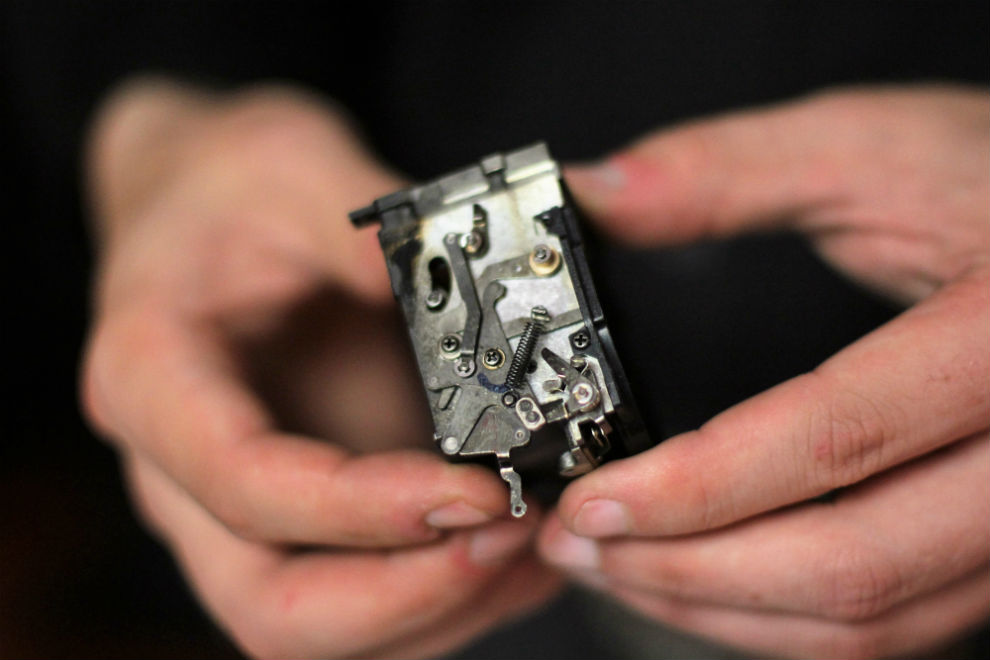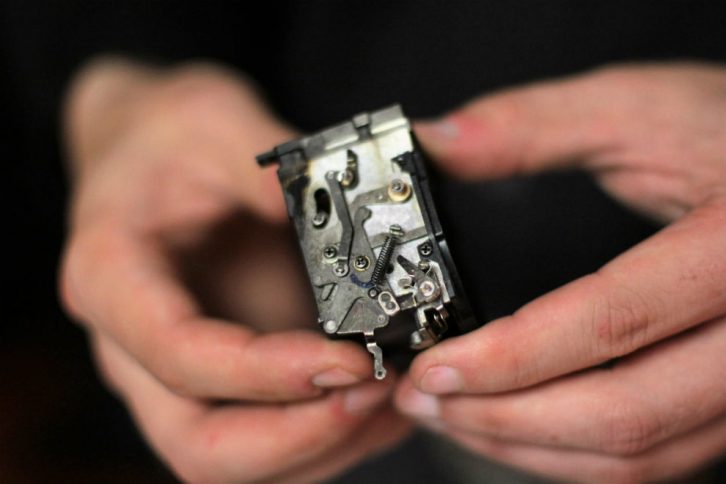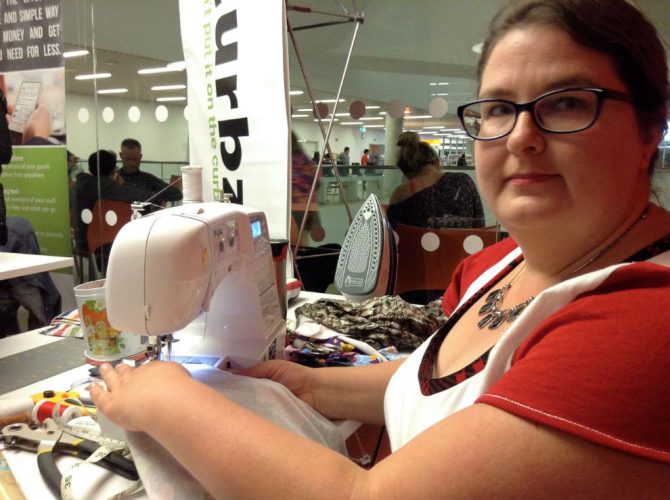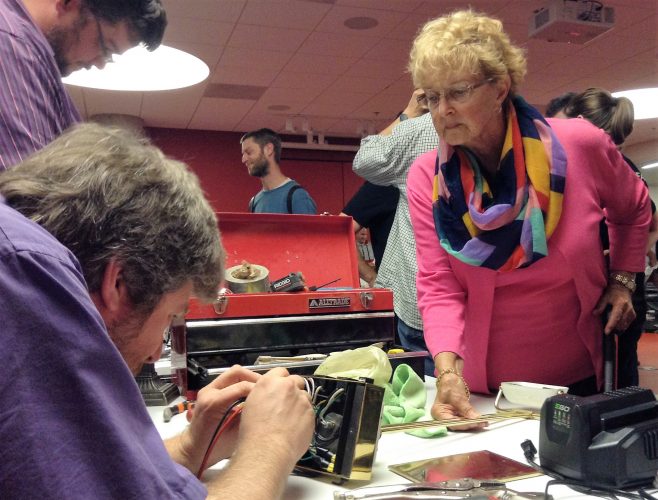Environment
Why ditch it, if you can fix it?
'Recycling is not enough; we have to reduce our waste'

caption
"Fixing mechanical cameras is actually really simple," says Wesley Gould at the fix-it fair.
caption
“Fixing mechanical cameras is actually really simple,” says Wesley Gould at the fix-it fair.How effective is recycling if you don’t reduce waste and reuse materials?
Charlynne Robertson, a director of the the Clean Foundation, says that to live sustainably, recycling is not enough.
“Waste reduction is key. It has to happen,” says Robertson.“It’s simply not sustainable to live in this consumer society where we are purchasing and throwing away so many things.” Related stories
In an effort to show people how to reduce waste and reuse materials, the Clean Foundation and Divert NS are encouraging environmental sustainability projects in the province. As part of their initiative, they held a fix-it fair on Wednesday evening.
About 100 people attended the Halifax Central Library event that showcased how people can fix broken products and reuse materials that others would throw in the trash. Some people brought household items to be repaired, while others came to learn new skills.
[idealimageslider id=”14870″]
Robertson says, reducing trash and reusing materials means landfills don’t fill up as quickly and there is less demand for new products to be created.
“Things don’t need to be wasted,” says Jeff MacCallum, CEO of Divert NS. “Our parents’ and grandparents’ generation, I don’t think they threw out anything; they fixed it.”
When her kids grow out of their clothes, Laurie Wilson sews the material into something new.

caption
Laurie Wilson’s six-year-old son already knows how to sew pillow cases and drawstring bags. She says that teaching her kids how to fix things gives them a sense of respect for the things they own.Jeremy Kayea says, while it is getting harder to repair products like laptops and mobile phones, repairs are possible if you’re willing to put in the time. He thinks it’s worth it if it reduces waste. Kayea has fixed water-damaged Apple iPhones and replaced computer batteries and hard drives.
Rose Marie Mahr, from Halifax, is part of the older generation MacCallum speaks about. She wishes there were as many repair shops in Halifax as there were in the past.
She was happy to have the opportunity to come to the fair to see if anyone could repair her favourite desk lamp.

caption
Peter Spierenburg with Halifax Maker Space fixes Rose Marie Mahr’s desk lamp. Maker Space is a group that repurposes materials.MacCallum cites a number of reasons why people have shifted to throwing products away rather than repairing them.
They live busier lifestyles and want the convenience of disposable products. Technology has advanced, making some repairs more complicated and many companies design products to feed a circular economy — where people buy, toss away, then buy updated products to replace them.
MacCallum believes that in order to stop this cycle, people need to take charge.
“Change really comes from demand,” says MacCallum. “If people start to consume things that are designed to last or to be fixable, that’s how change will happen,”
Robertson agrees. “We need to value the products we buy instead of buying into a throw away society.”

